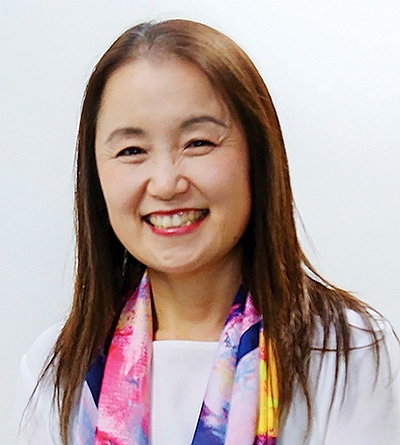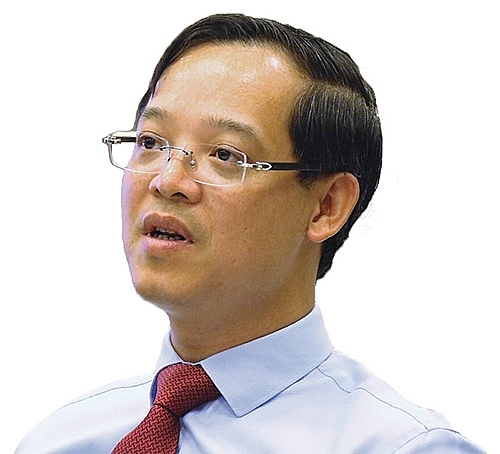Growing up to rapidly-rising demand for nursing homes
 |
| Changing lifestyles and an aging population present a growing need for quality, professional care for the elderly, Photo: Shutterstock |
Leaders of real estate developer Tuan Minh Group last week made a business trip to Japan, visiting a series of nursing homes to study operation models to apply at their own Tuan Minh Paradise Resort – the first resort and nursing centre meeting Japanese 5-star standards in Vietnam.
The centre is located on a 99-hectare area in Luong Son district, Hoa Binh province, with construction kicked off in the second quarter of 2019 and slated for completion in 2021.
Tuan Minh Paradise Resort is designed with Japanese interior and exterior elements and upon completion will be managed and operated by a Japanese company, according to the agreement with Ozawa Civil Engineering and Construction Co., Ltd. and Hashimotogumi Co., Ltd. to develop the project, signed in 2018.
The project also combines with an international hospital with many faculties to serve the needs of elderly clients, including treatments such as physiotherapy and rehabilitation. The doctors are Vietnamese and Japanese geriatricians and can speak English and Japanese fluently.
Such moves are being looked at more often in the context that Vietnam’s poulation make-up is set to drastically change over the next few decades. The results from a 2019 Population and Housing Census (PHC) conducted by the General Statistics Office of Vietnam (GSO) showed that the Vietnamese population is in an “ageing phase”, with 11.4 million aged 60 and over.
Associate Professor Giang Thanh Long from the National Economics University told VIR that the demand for nursing care services would be large due to the increasing number of older persons in the coming decades, which is expected to be about 27 million by 2049.
Added to the PHC 2019 results, Long noted that about 15 per cent of older persons had difficulty in self-care; 26 per cent in walking; and about 12 per cent in communication, implying a great need for old-age care.
Elderly needs
According to the United Nations Population Fund (UNFPA), more seniors have been exposed to new chronic diseases resulting from socioeconomic changes, with around 95 per cent of them suffering from at least one health condition like joint degradation, cardiac problems, blood pressure, diabetes, cancer, or urination disorders. While their families can take care of the elderly with mild or moderate debilitation, in case of serious debilitation, they need care by trained nursing staff.
In addition, many seniors opt for nursing homes for companionship and proper care because their children live either far away or have little time to see to their needs.
“The need for healthcare services for the aged will surely expand,” said Dr. Nguyen Tuan Ngoc, chief executive and founder of Thien Duc Nursing Home.
Thien Duc Nursing Home has opened three facilities in Hanoi, one in Ba Ria-Vung Tau province, and one in Dong Nai province within the last two decades. The company plans to expand further in Hanoi, Ba Ria-Vung Tau, Danang, and Ho Chi Minh City to meet the mounting demand.
“Numerous Japanese investors want to develop nursing homes in Vietnam to serve not only Vietnamese seniors but also Japanese elderly who wish to stay in Vietnam to enjoy its advantageous climate and natural landscape, especially in coastal cities and provinces,” Long said.
Greater care service demand
Along with private investment in this sector, international groups are looking into implementing such projects under the public-private partnership (PPP) model. For example, the Asian Development Bank is currently exploring public social protection centres in various cities and provinces in order to see opportunities in upgrading services as well as providing paid old-aged care at these facilities. Long is particularly impressed with a small-scale PPP care model in Thai Binh province and said that such a model would be accessible and affordable.
However, he emphasised that nursing homes should consider providing home-based care, with a 2019 survey noting that about half of older people wish to be taken care of in their own homes. thus raising the demand for caretakers and specialised training facilities.
Care for the elderly in general is not cheap. Families must pay at least VND7 million ($300) per month for elderly care, depending on health status and choice of accommodation. Service with a single room can cost up to VND15 million ($650), around three times Vietnam’s estimated average monthly income per capita in 2019 of VND4.2 million ($180). A room with two beds could cost as much as VND20 million ($870).
“When investors develop such projects or services, they should consider accessibility, affordability, adequacy, and acceptability to ensure service packages are appropriate for clients,” Long said.
However, according to Dr. Ngoc from Thien Duc Nursing Home, even if suitable availability is found, the challenge lies in negotiations about rental fees and length of time. “Although investors want to rent land at public nursing centres to upgrade their services, these centres are not allowed to rent out land for private investors,” Ngoc said.
In addition, in Vietnam, the children usually pay for nursing services for their parents, adding a measure of uncertainty. “These factors make both foreign and domestic investors hesitant, despite the clear potential,” Ngoc said.
Long added that Vietnam is facing an alarming shortage of qualified care workers. Almost all elderly are cared for by relatives or domestic helpers with little medical expertise. Meanwhile, because of the multitude of possible health conditions, caretaker knowledge of physical and mental health is vital, just as much as soft skills.
“In general, in order to attract investors to exploit the opportunities presenting themselves, it is necessary to complete the legal framework and improve the skills of nursing staff by learning from foreign models, including those from Japan,” Long said.
| Naomi Kitahara - Representative in Vietnam, UNFPA
Vietnam has an optimum population structure which is forecast to last until 2034. The core factor to maintain this period is the stability of sub-replacement fertility. The results of the 2019 census firmly confirmed that Vietnam’s current fertility level has been steadily and slightly under the replacement level at 2.09 children per woman at present. This indeed assures the current and ongoing consideration for recasting by the government on population work, from population and family planning in the past, to population and development for the 2030 Agenda for Sustainable Development. However, Vietnam’s population is ageing at a pace never seen before: those aged 60 and above account for 11.86 per cent of the total population, or 11.4 million people. The ageing index grew from 35.9 per cent in 2009 to 48.8 per cent in 2019. Also, we need to highlight a new trend of feminisation of ageing, meaning that the majority of old people are old women, and increasingly more of them are living alone, which has become a social issue and deserves public attention. Hence, it should be fully understood that population ages not just because mortality declines and people live longer, but because fertility declines. Truong Anh Dung - Director general, General Directorate of Vocational Education and Training
Vietnam is in a phase of demographic transition, in which the “population dividend” can be tapped into for national development. In the 2019 census, Vietnam recorded the highest proportion of young people in Vietnam’s history with 20.4 million young people aged 10-24, which accounts for 21 per cent of the population. The demographic window of opportunity, which was first identified in 2007 and is projected to last until 2041, presents Vietnam with a unique opportunity for developing a generation of drivers of economic, social, and environmental progress. These statistics showed that Vietnam has advantages in its labour force. In order to promote this and generate a skilled labour force, the education and vocational training activity is important. Accordingly, it is necessary to diversify training sectors and generate more job opportunities. In addition, creating a gentle balance in the labour market is a factor to diversify the labour force. International cooperation on training high-quality human resources is an important solution to innovate and improve quality of the vocational system. For this, we are also utilising the support of developed countries. |
What the stars mean:
★ Poor ★ ★ Promising ★★★ Good ★★★★ Very good ★★★★★ Exceptional
 Tag:
Tag:
Related Contents
Latest News
More News
- PM orders investment model for North–South high-speed rail (December 22, 2025 | 17:43)
- First members of Danang International Finance Centre revealed (December 22, 2025 | 17:39)
- Securing capital and efficiency for Vietnam’s 2026-2030 growth ambitions (December 17, 2025 | 10:00)
- Driving double-digit growth through green and circular transformation in Vietnam (December 17, 2025 | 09:00)
- Vietnam bucking trend in the global M&A landscape (December 16, 2025 | 14:20)
- Vietnam’s green transition demands collective financial action (December 15, 2025 | 12:00)
- VIR workshop highlights capital and policy for sustainable development (December 15, 2025 | 11:00)
- National Assembly approves pilot mechanisms to accelerate major projects in Hanoi (December 12, 2025 | 11:29)
- Vietnam eases policy approval requirements, simplifies foreign and outbound investments (December 11, 2025 | 17:53)
- Unpacking new momentum in Vietnam’s M&A market (December 10, 2025 | 09:59)

























 Mobile Version
Mobile Version